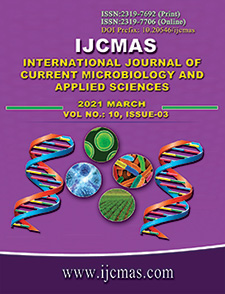


 National Academy of Agricultural Sciences (NAAS)
National Academy of Agricultural Sciences (NAAS)

|
PRINT ISSN : 2319-7692
Online ISSN : 2319-7706 Issues : 12 per year Publisher : Excellent Publishers Email : editorijcmas@gmail.com / submit@ijcmas.com Editor-in-chief: Dr.M.Prakash Index Copernicus ICV 2018: 95.39 NAAS RATING 2020: 5.38 |
A resource model of extension as suggested by Salmon (1980), puts farmers and researchers as equally important contributors. The function of the extension is to transfer and nurture this pool of knowledge within the rural system. The concept of leadership has undergone considerable change as research in this area of study progressed. The valuation of those who exercise power in respect of the existing communal state of affairs, technological and non-technological changes, and opportunities for such development and change, is of considerably more significance than the assessment of those who do not have power in society. The 73rd Amendment offers for an intricate system of establishing panchayats as units of self-government. For the first time in the constitutional history of India, the constitution of the panchayat, the duration of their term, their membership, the constitution of Finance Commission to review their financial situation is detailed. In this study, Ex-post-facto research design has been used. In all (9 + 54 + 200) 263 panchayat leaders were considered as respondents for the study. The basic method used in gathering the primary data for the instant study wasa field survey. The interview schedule was used as an instrument for collecting the raw data from the panchayat leaders. A note worthy majority of the gram panchayat leaders and the majority of the janpad and jila panchayat leaders had medium time allocation for panchayat activities. The gram panchayat leaders dedicated 3.73 hours per day on an average for panchayat activities whereas janpad and jila panchayat leaders devoted 5.33 hours per day on an average for panchayat activities. It may be concluded that just above three-fifth of the gram panchayat leaders were inexperienced whereas around four-fifth of the janpad and jila panchayat leaders were knowledgeable. The majority of both the gram panchayat leaders and the janpad and jila panchayat leaders had medium training requirements with respect to panchayat activities. An inference may be drawn that two-fifth of the gram panchayat leaders and just less than three-fifth of the janpad and jila panchayat leaders had moderately favourable attitude towards panchayati raj establishments.
 |
 |
 |
 |
 |